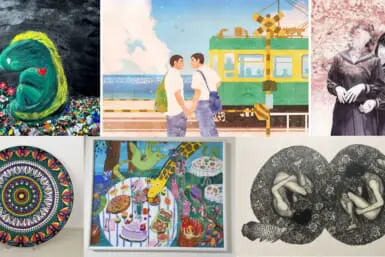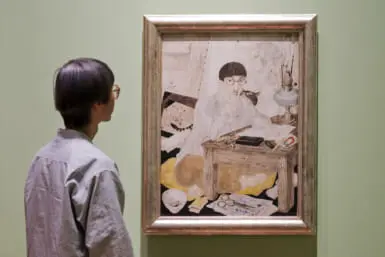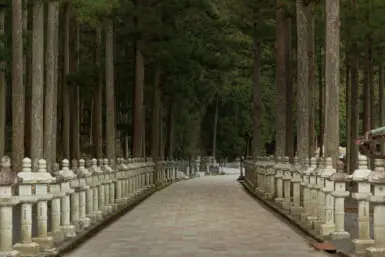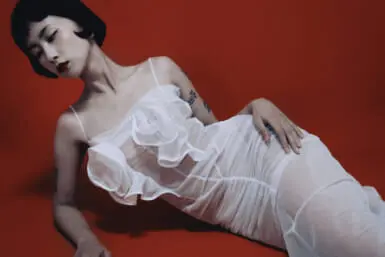Empress Emerita Michiko turned 86 today, October 20, and to celebrate, we decided to have a look back at the life and times of the first commoner to marry into the Japanese Imperial Family. An extremely popular figure (voted number three in our survey of Japan’s Greatest Ever Woman), she brought a breath of fresh air to the venerable institution when she married Crown Prince Akihito in 1959. While she has suffered from stress and anxiety brought about by the pressures of adjusting to life in the palace, she can now enjoy her retirement in relative peace. Here are some things you may or may not have known about the birthday lady.
1. Michiko comes from an aristocratic-like family
Michiko Shoda may not have descended from royal blood, but her family was extremely wealthy. Born to Hidesaburo Shoda and Fumiko Soejima on October 20, 1934, she had a very privileged upbringing. Her grandfather Teichiro Shoda founded Tatebayashi Flour Milling (now known as Nisshin Seifun Group) in 1900 which became the largest wheat miller in Japan and one of its biggest food companies. Hidesaburo became president of the firm after World War II as his eldest brother had died at a young age and the second in line, Kenjiro Shoda focused on math (becoming one of best mathematicians in the country). Currently headed by Michiko’s younger sibling Osamu Shoda, Nisshin is still an economic powerhouse.

2. She has a keen interest in Irish culture
Before a state visit to Ireland in 2005, Empress Michiko told reporters that she had been taught by Irish nuns as a youngster, recalling “the charm and loveliness of each one of them.” While majoring in English literature at the Catholic University of the Sacred Heart, where she graduated summa cum laude, the future empress learned about Irish history as well as its literature and music. In his book, Wherever Green is Worn: The Story of the Irish Diaspora, Tim Pat Coogan wrote about her playing the Irish harp, speaking Gaelic and being able to recite a poem by the executed 1916 leader, Joseph Plunkett: I See Blood Upon the Rose as her party piece.
3. Yukio Mishima was one of her suitors
As well as coming from a rich family, Michiko Shoda was also known for her grace and elegance. It was, therefore, no surprise that she had several contenders for her hand in marriage. According to several of his biographers, among them was Yukio Mishima, one of the most influential writers Japan has ever produced. Perhaps his pre-nuptial demands put her off: His wife needed to respect his privacy, not interfere with his writing or bodybuilding and had to be shorter (he was 152cm). Known for his right-wing views, Mishima said the Imperial system had become “tabloidesque” and “was losing its dignity by connecting with the people,” after Michiko wed Crown Prince Akihito in 1959.
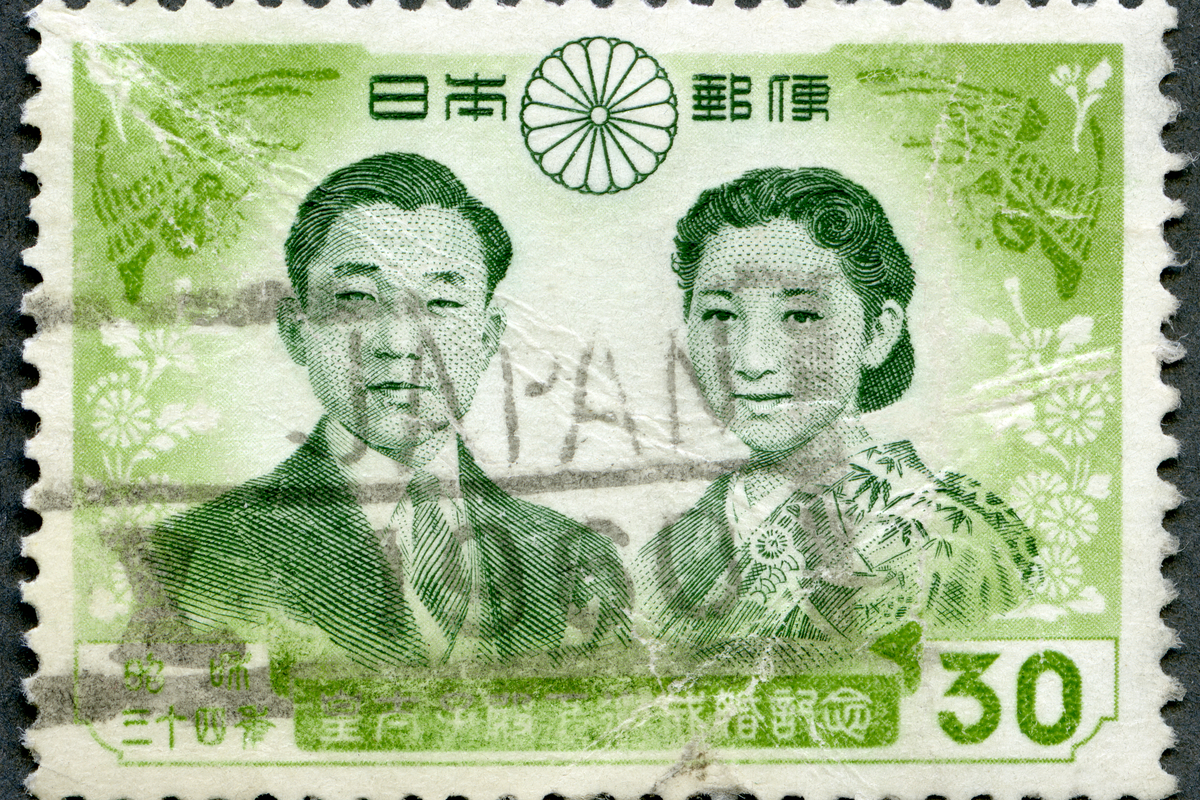
A stamp printed in Japan shows Prince Akihito and Princess Michiko, circa 1959. Shutterstock
4. The Imperial romance began on a tennis court
In August 1957, a mixed-doubles tennis match in Karuizawa that lasted more than two hours ended in defeat for the Crown Prince Akihito and his partner, but he wasn’t too disappointed. On the opposing side of the net was Michiko Shoda and an American 12-year-old boy named Bobby Doyle. It was the first time the future emperor and empress had met. According to reports, after the game, he took a picture of his soon-to-be wife, had it framed and sent it to her via a friend. Fifteen months later, the pair were engaged. Her parents were initially against the idea and she refused his proposal, however, in the end relented. The media dubbed their encounter as the “romance of the tennis court.”
5. TV sales soared as a result of the “Mitchi Boom”
Breaking with over 2,000 years of tradition, Michiko was set to become the first commoner to marry into the cloistered Imperial Household. As the marriage drew closer, interest in the English literature graduate intensified. The public was enthralled by a woman seen as a symbol of the country’s modernization. It was the start of the so-called “Mitchi Boom.” Sales of TV sets, which only arrived in Japan six years earlier, skyrocketed because everyone wanted to see her marry the crown prince. On April 10, 1959, an estimated 15 million people (a record at the time) tuned in to watch parts of the wedding while more than 500,000 lined the parade route to celebrate their big day.
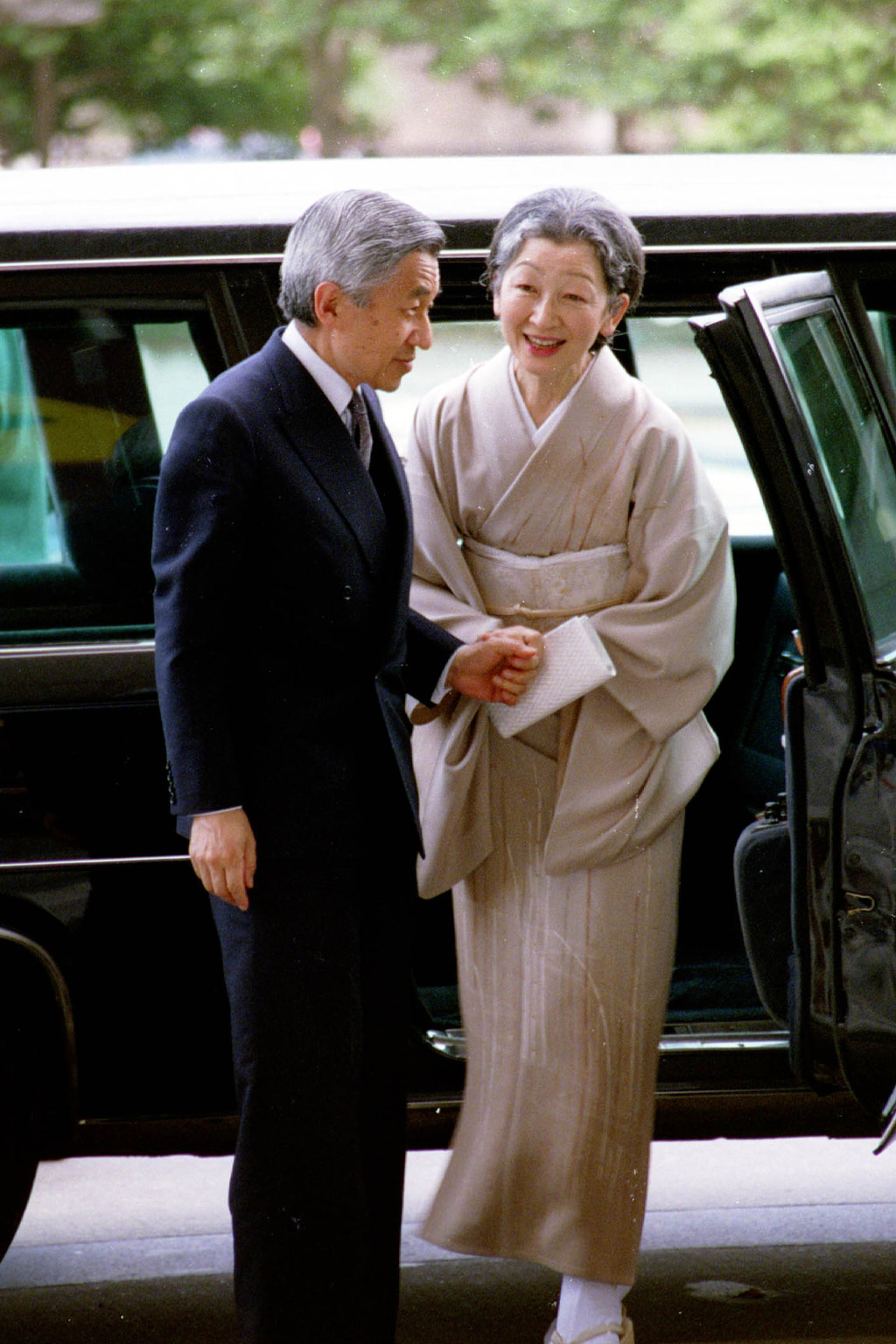
Then-Japanese Emperor Akihito and Empress Michiko arrive at the Kennedy Center for the Performing Arts during their state visit, 1994. Source: Shutterstock
6. Empress Nagako reportedly opposed the marriage
Not everyone was happy to see the couple wed. Traditionalists expected their future emperor to find a bride among the Kazuko ranks, the former Japanese hereditary peerage, not a commoner who had been educated at a Catholic institution. Michiko’s mother-in-law Empress Nagako (posthumous name Kojun), was one of the marriage’s most vigorous opponents. According to Reuters, the ferocious empress and her courtiers bullied Michiko to the point of a nervous breakdown after failing to stop the engagement. “She suffered immensely,” said royal expert Midori Watanabe. “Even when being bullied, she said not one word and concentrated on raising her three children. She overcame tough times with her strong spirit.”
7. The Naru-Chan Constitution became a best-seller
Until the birth of Prince Naruhito on February 23, 1960, the everyday care of royal children had been the responsibility of wet nurses and maids. Again, breaking with tradition, Crown Princess Michiko decided to raise her son, followed by his siblings Prince Akishino and Princess Sayoko herself and even breastfed them. When she was away, she left a notebook with written instructions for nannies on how to take care of Naruhito. The list, which included things like hugging him at least once a day and don’t let him play with more than one toy at a time, was turned into a best-selling book titled Naru-Chan Kempo (The Naruhito Constitution).
8. Michio Mado’s award-winning poetry was translated by the Empress
In 1994, Michio Mado became the first Asian person to receive the Hans Christian Andersen Award for writing, recognizing his lasting contribution to children’s literature. A revered poet in Japan for several decades, Mado only started to gain international recognition in the early 1990s when Empress Michihiko began delicately translating his work into English, including his most famous book, Dobutsu–tachi (The Animals). She also composes her own poems and in 1997, the book Seoto (The Sound of the Current) was published featuring a collection of 367 waka (classical Japanese poems) she’d written. Six years earlier, she released the children’s book Hajimete no Yamanobori (My First Mountain).
9. A “deep sadness” caused the empress to fall mute
On this day 27 years ago, Empress Michiko collapsed as she prepared to celebrate her birthday. She recovered consciousness fairly quickly but was unable to say a word for around two months. A similar thing happened to her in the 1960s. Doctors put the mysterious sickness down to a “deep sadness” most likely caused by the unusually negative press she had received in the preceding months. Before her collapse, Michiko had released a statement saying, “Whatever criticism may come my way, I think I should listen carefully. However, I am greatly saddened and bewildered by untruthful news reports.” Articles in magazines described her as domineering, suggesting the emperor had become nothing more than a “cushion” for her to sit on. The publications later admitted to factual errors in their reports.
10. Michiko and Akihito helped to bring the secluded palace closer to the people
Following the volcanic eruption of Mount Unzen in Nagasaki prefecture in 1991, their majesties visited shelters near the site to hear stories from the evacuees while offering encouragement as they knelt to be at the same eye level. After flying there on a commercial flight, they were then offered a special room on the fifth floor of their hotel, but chose instead to stay in a regular one on the first floor. Throughout the Heisei Era whenever a disaster struck, the pair would always go to stricken areas to speak to victims. For seven consecutive weeks they visited afflicted regions of the 2011 Tohoku Earthquake and Tsunami. They also went out of their way to show their support for the marginalized members of society – from leprosy patients to the elderly. The popular couple stepped down last year. Their post-abdication titles are emperor emeritus and empress emerita.


